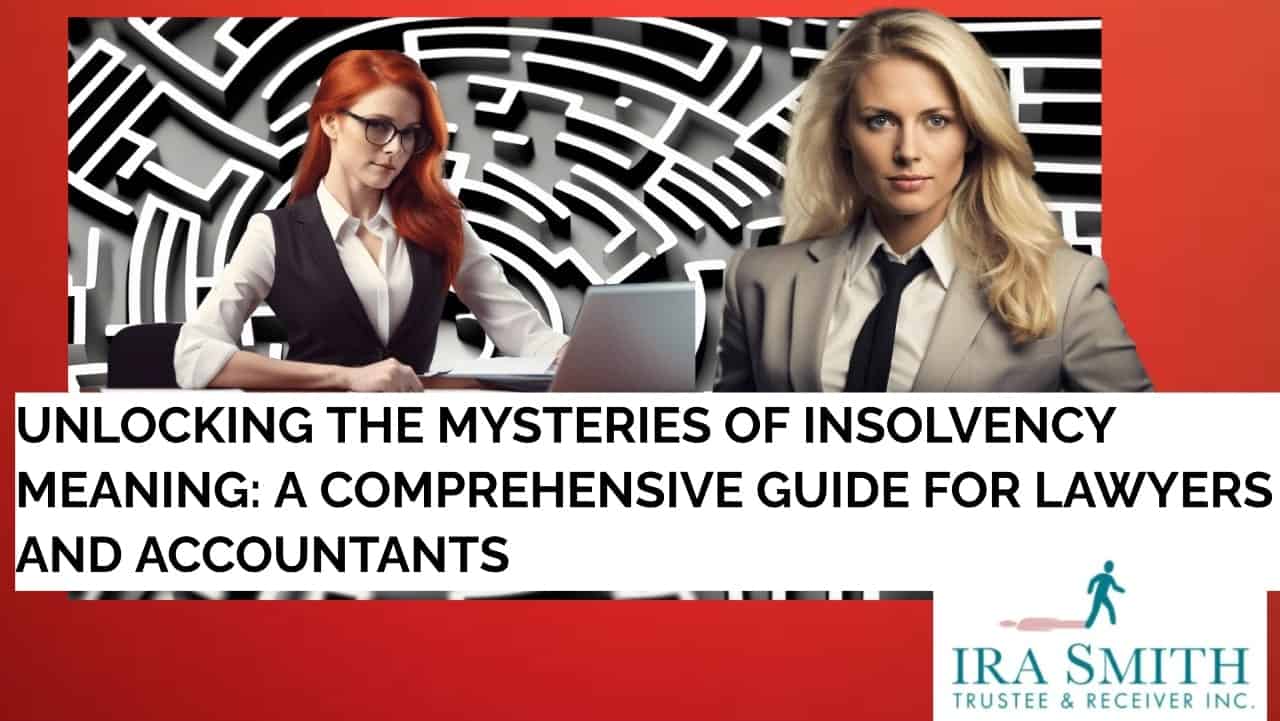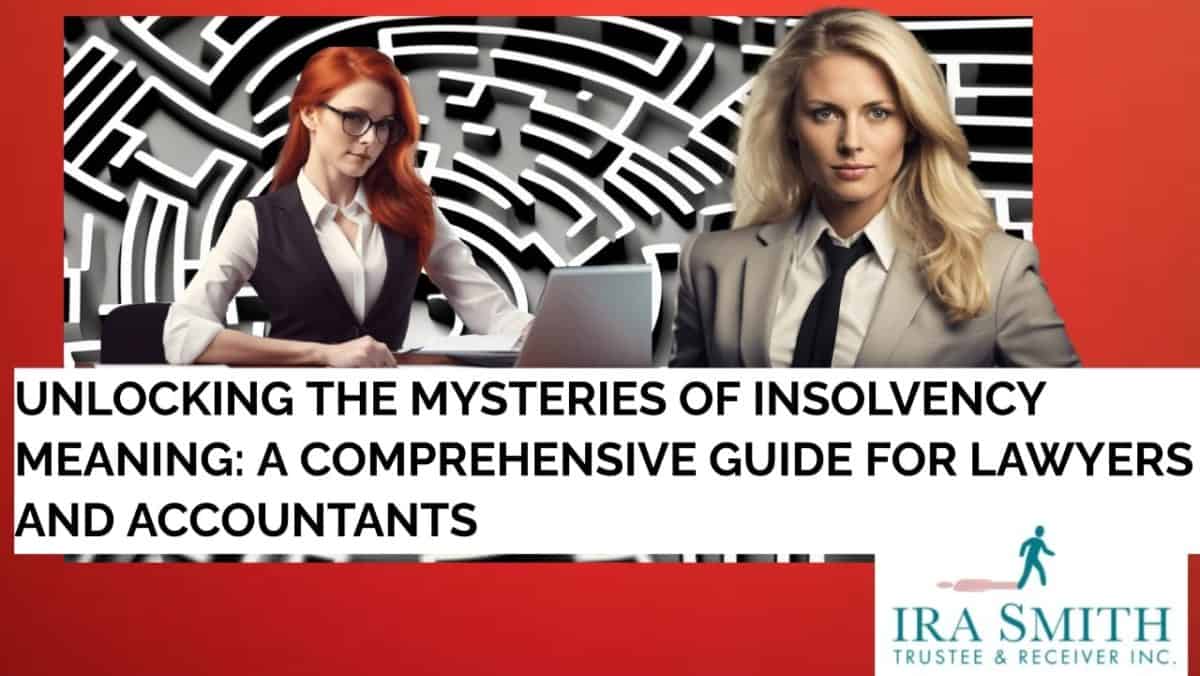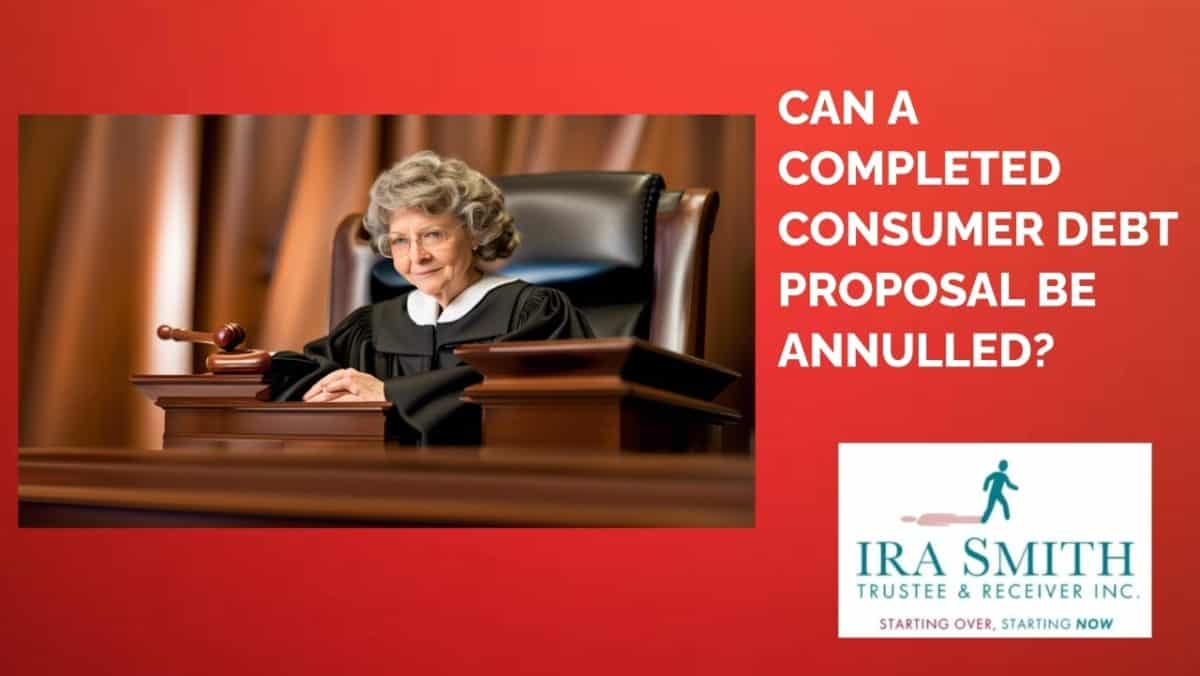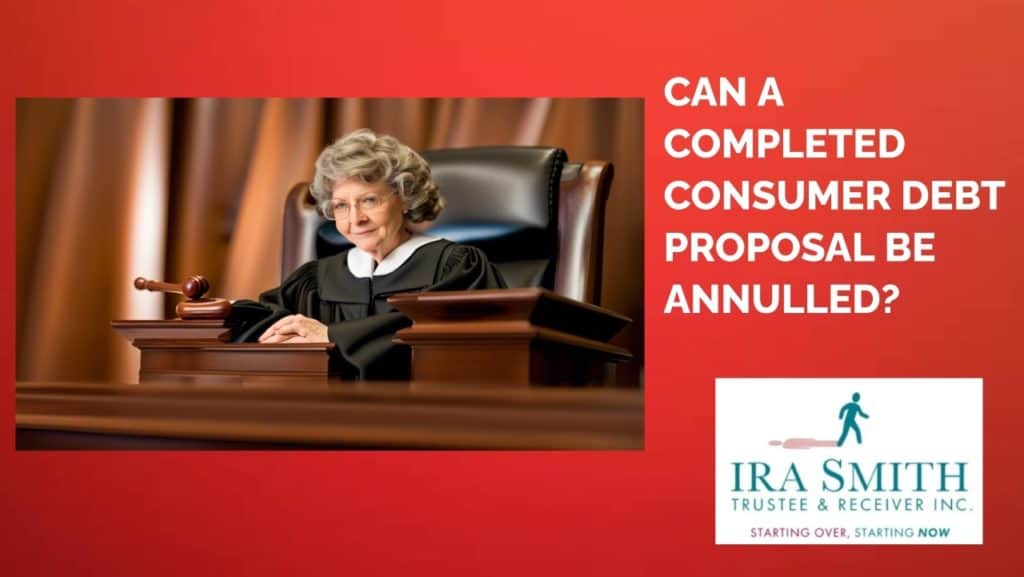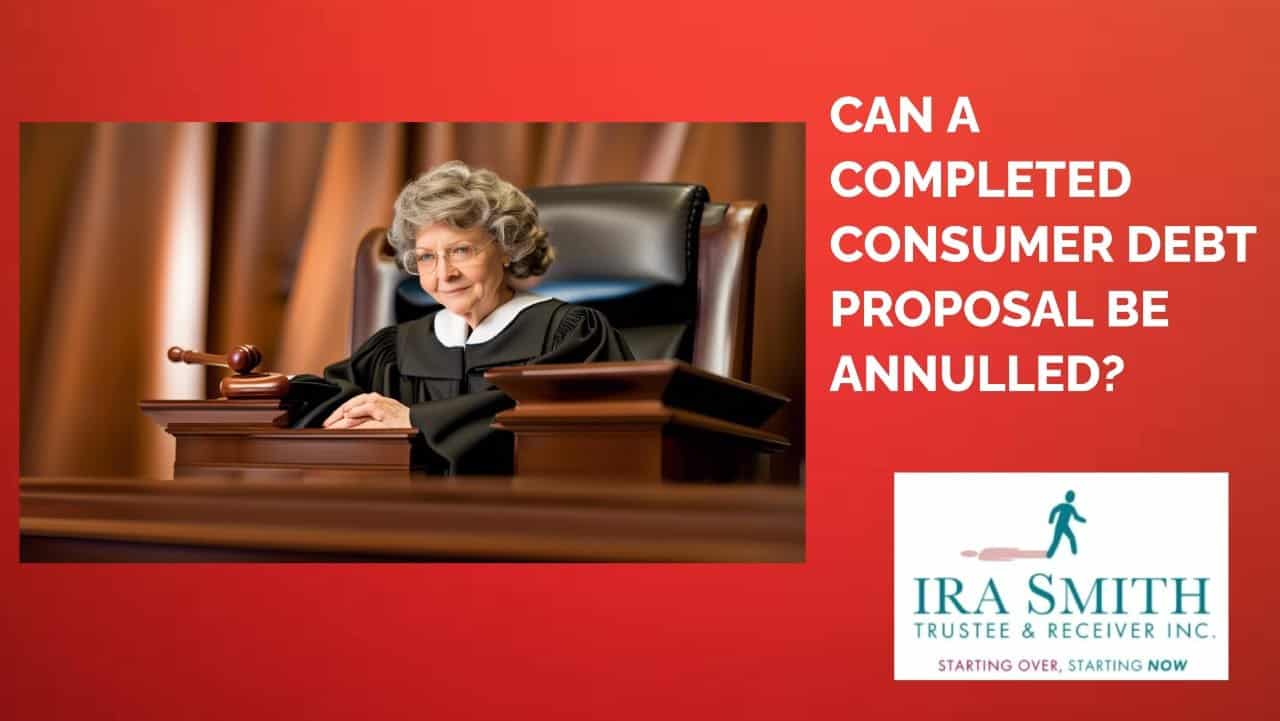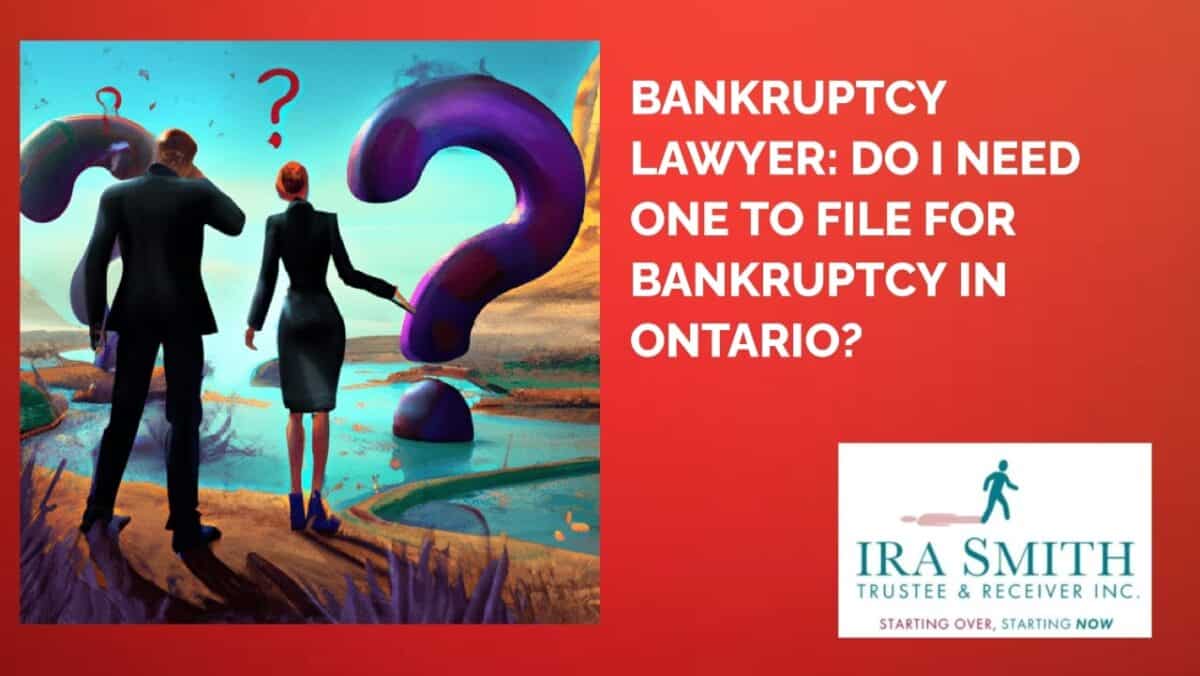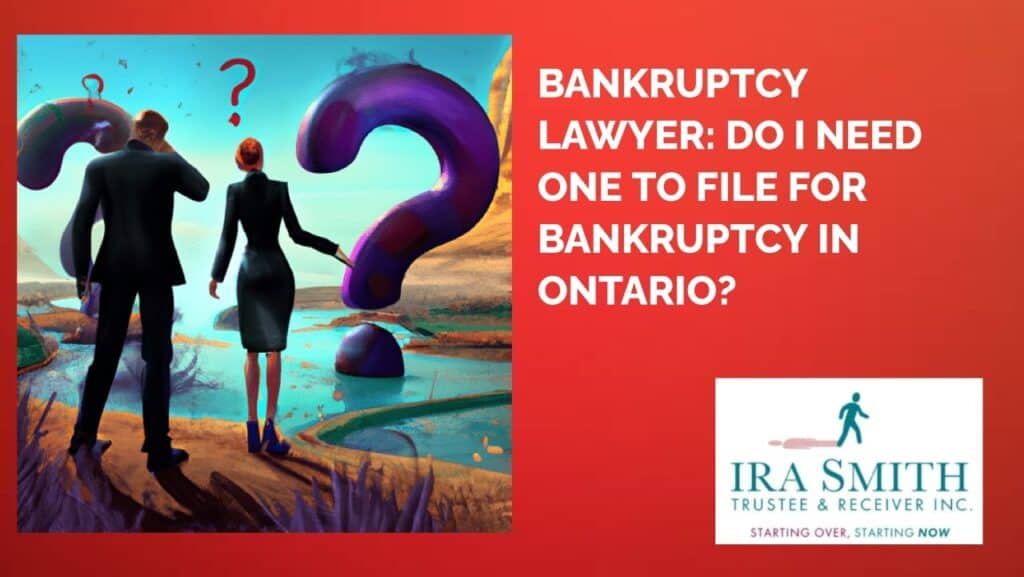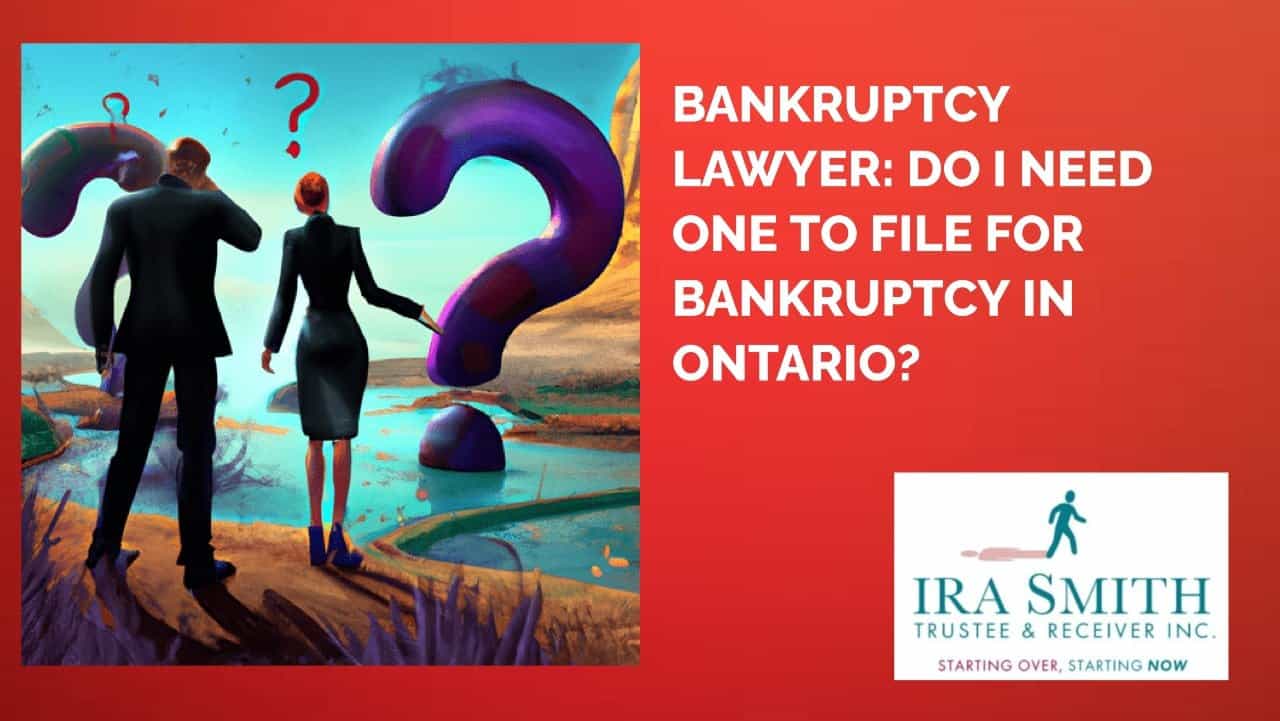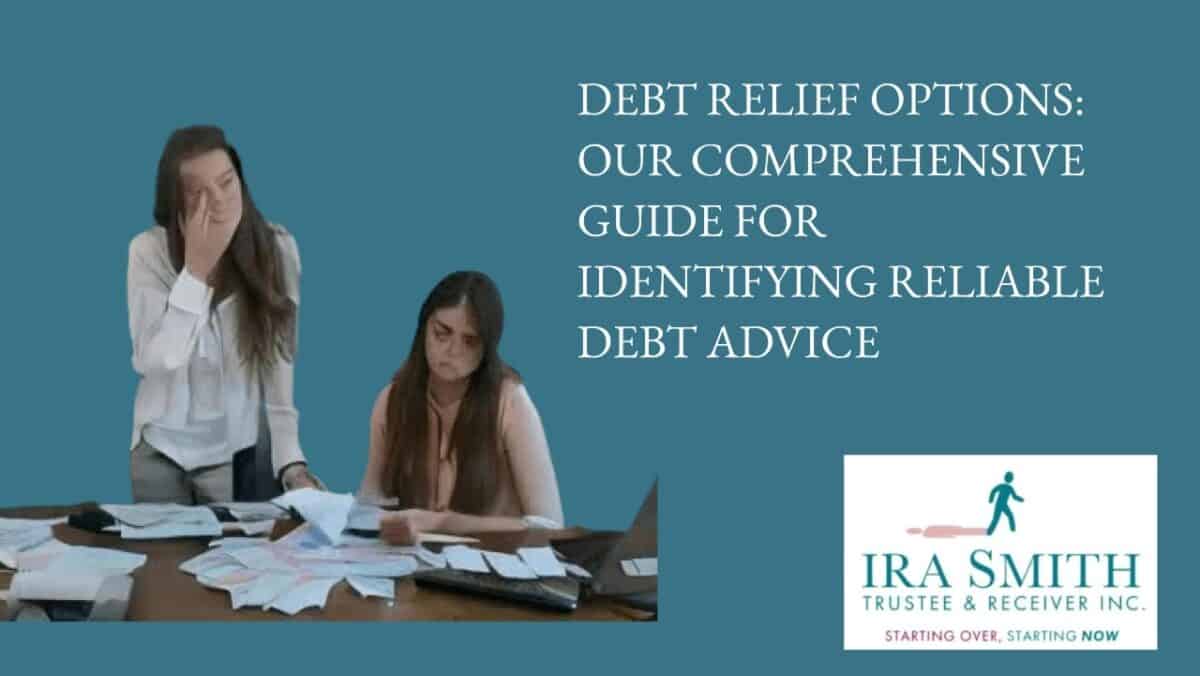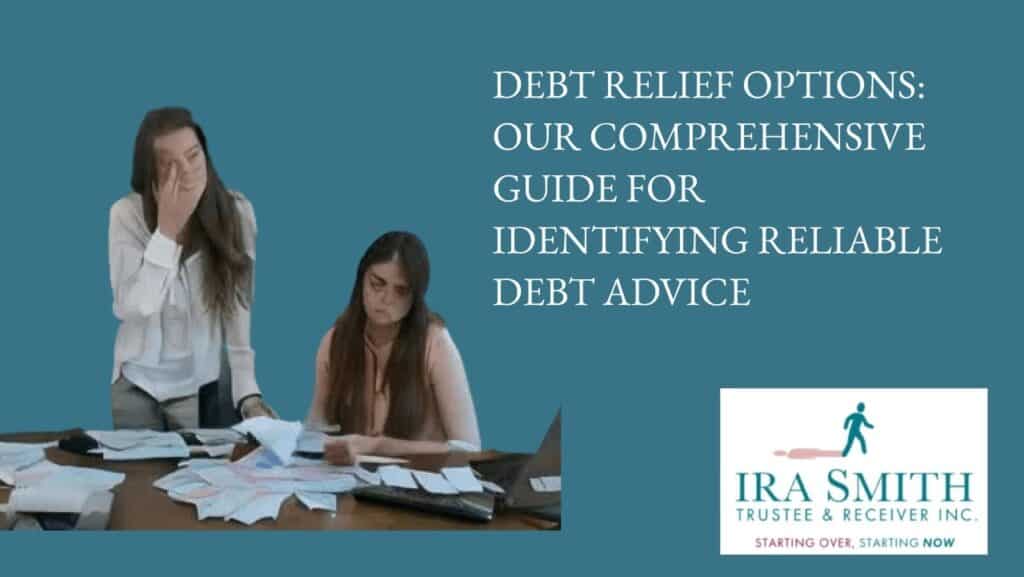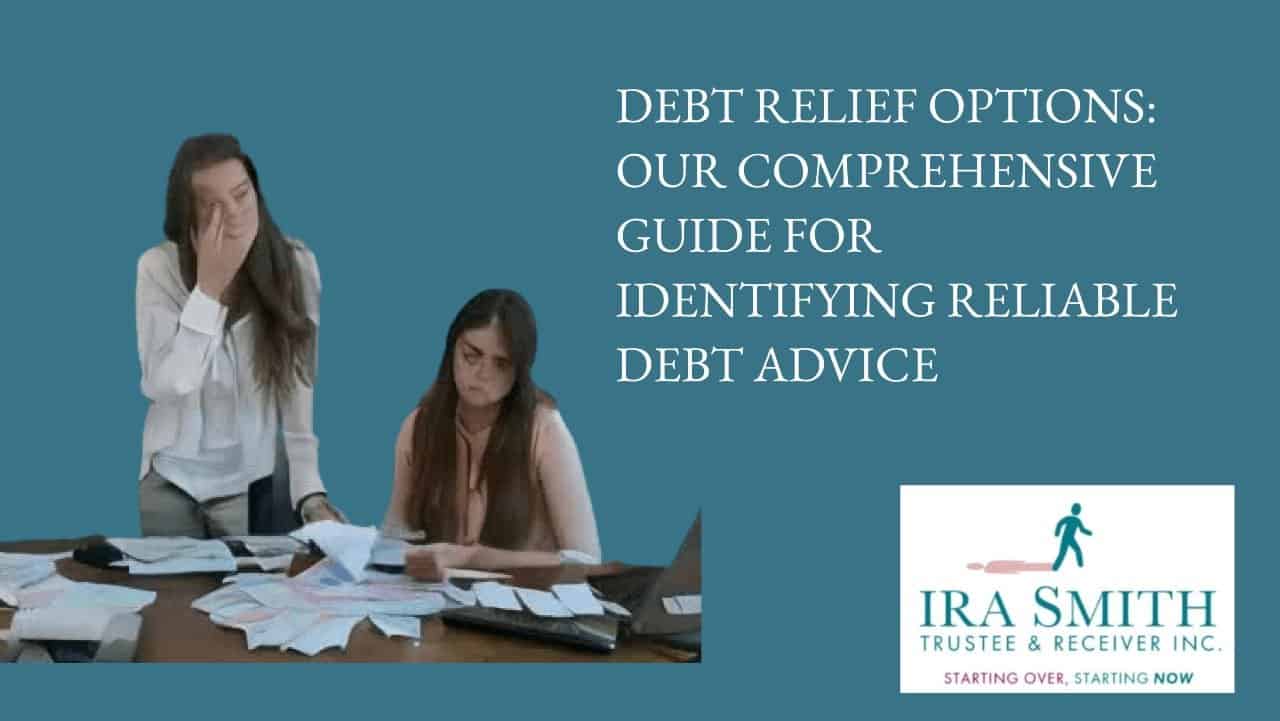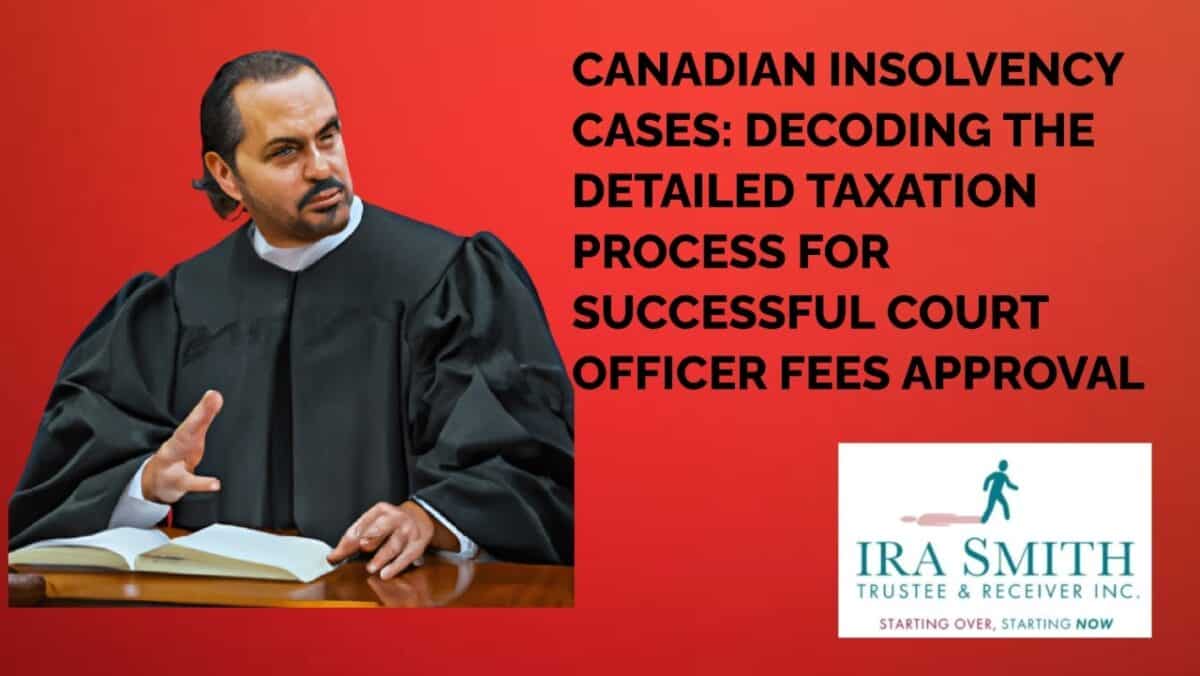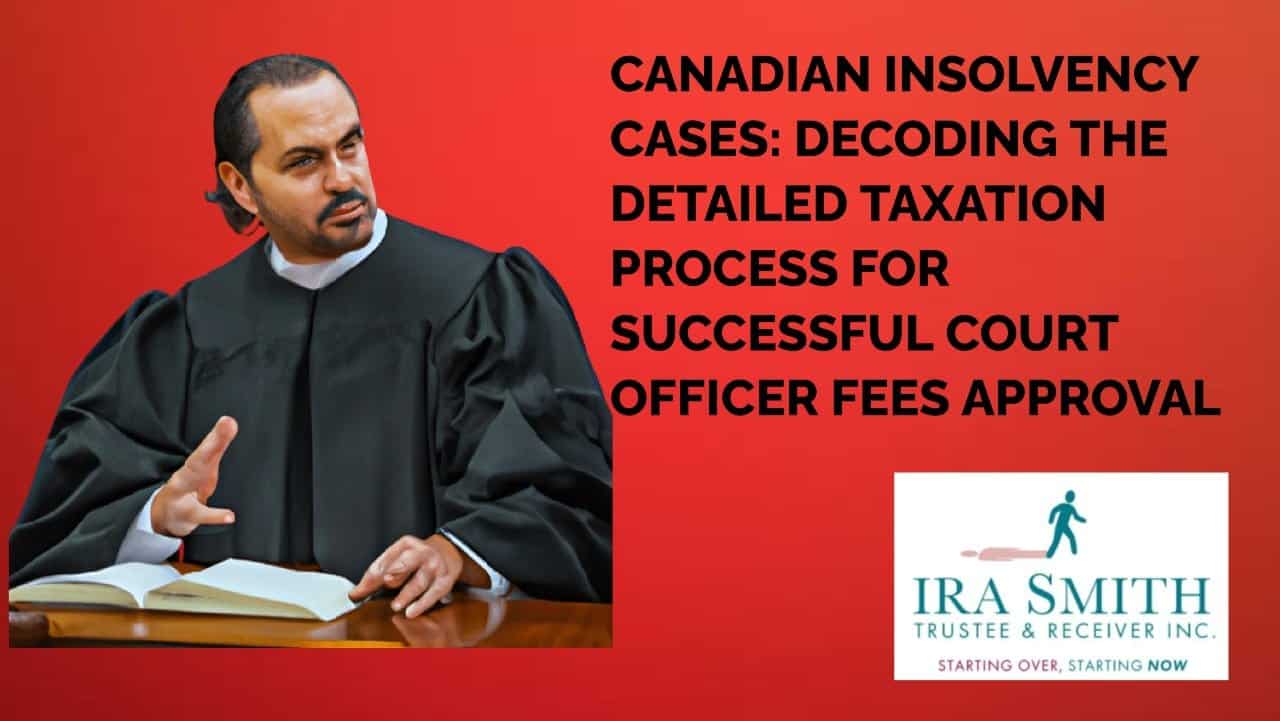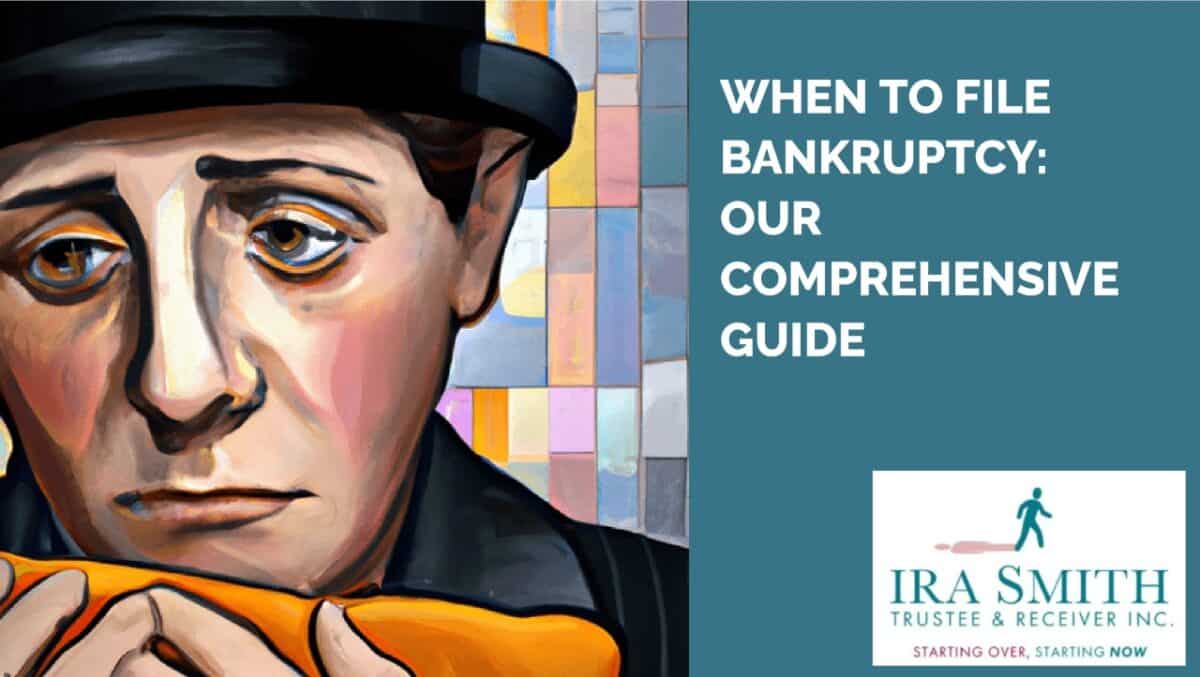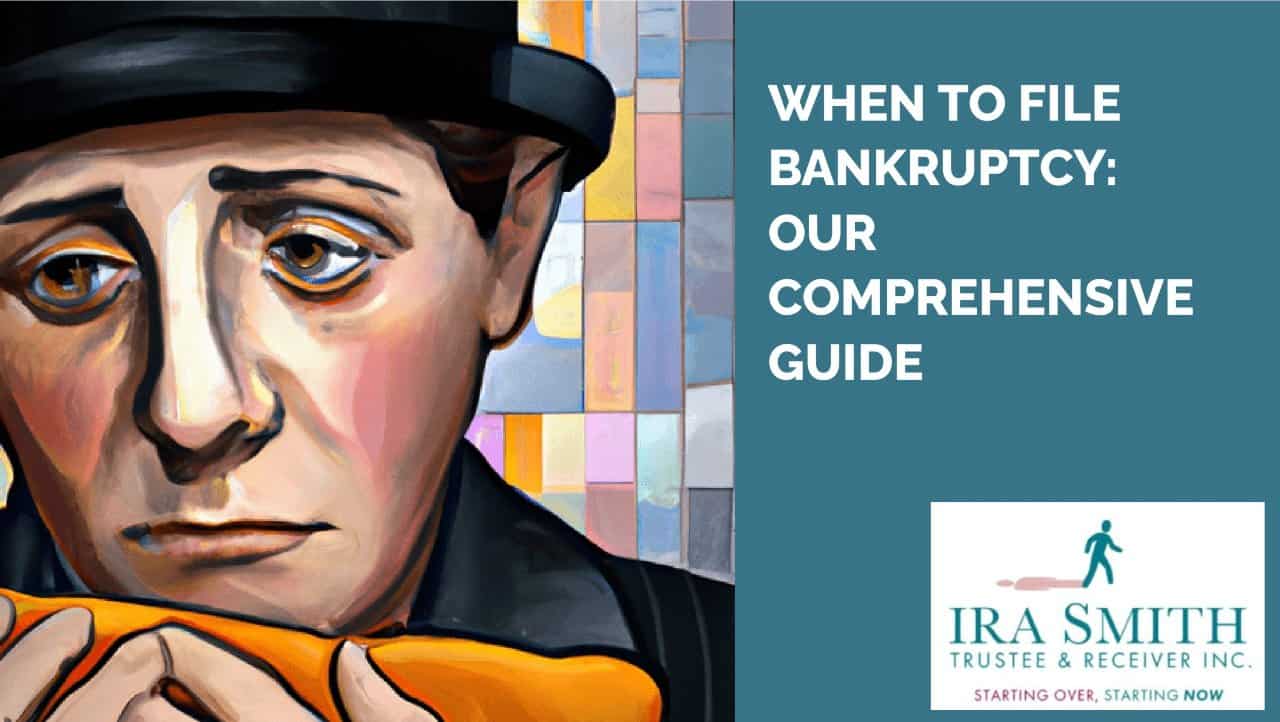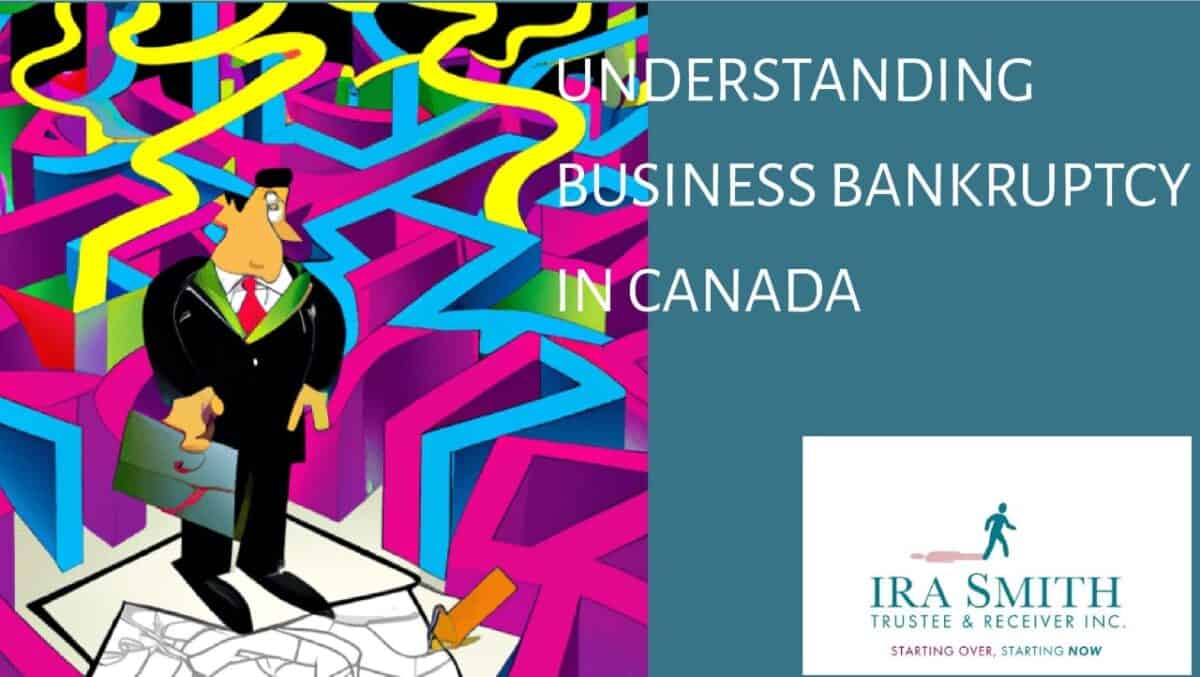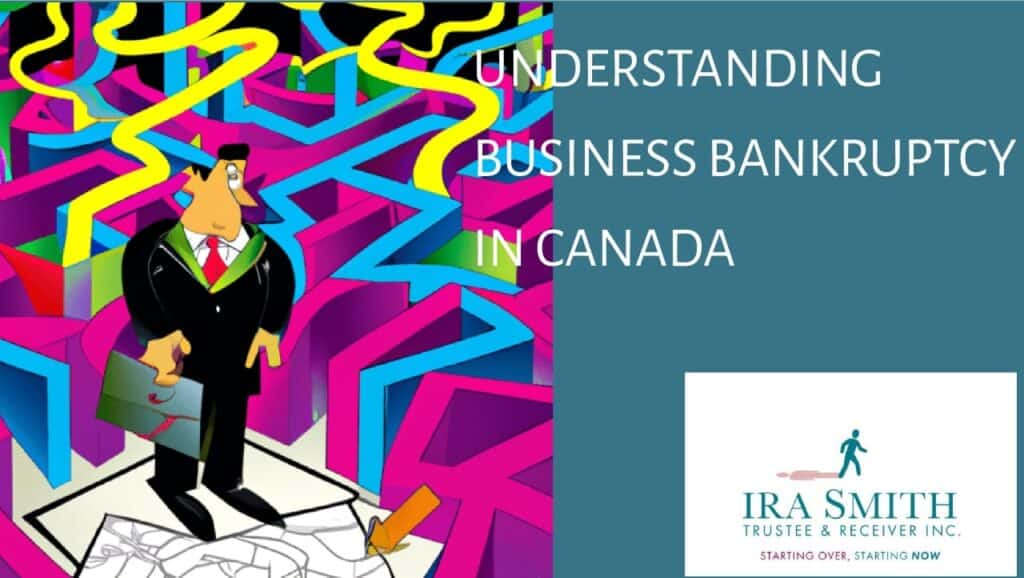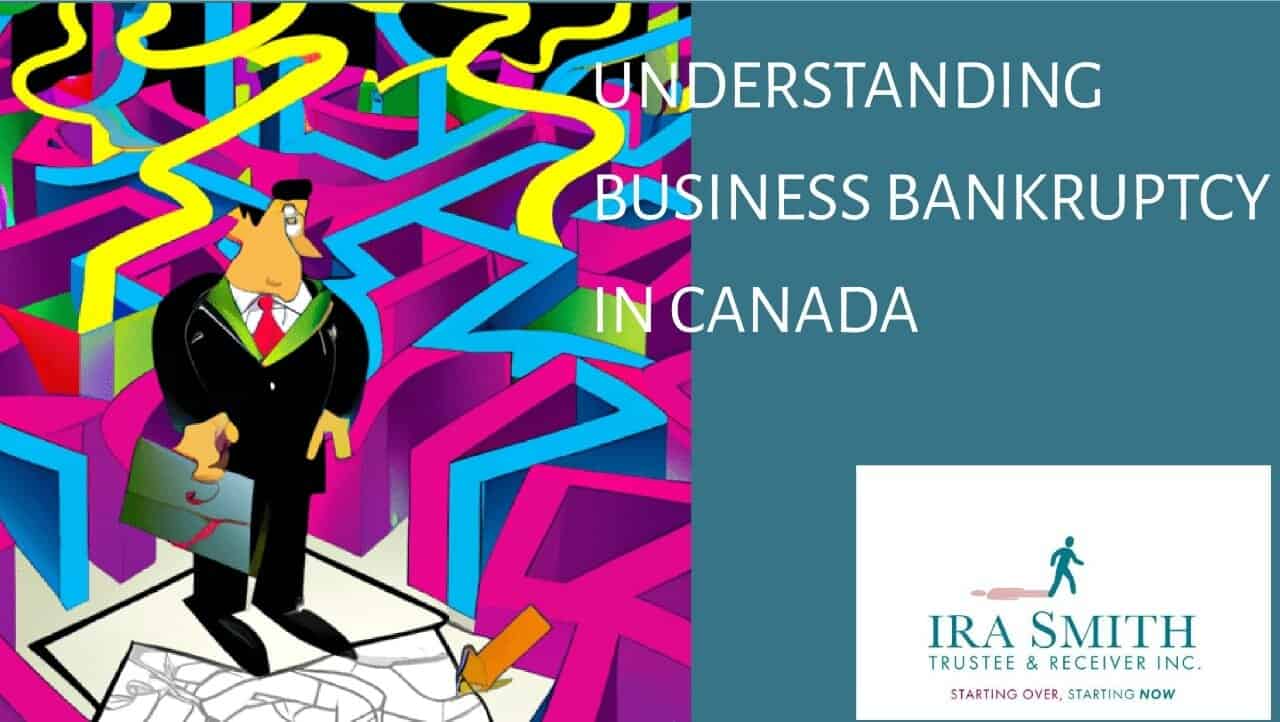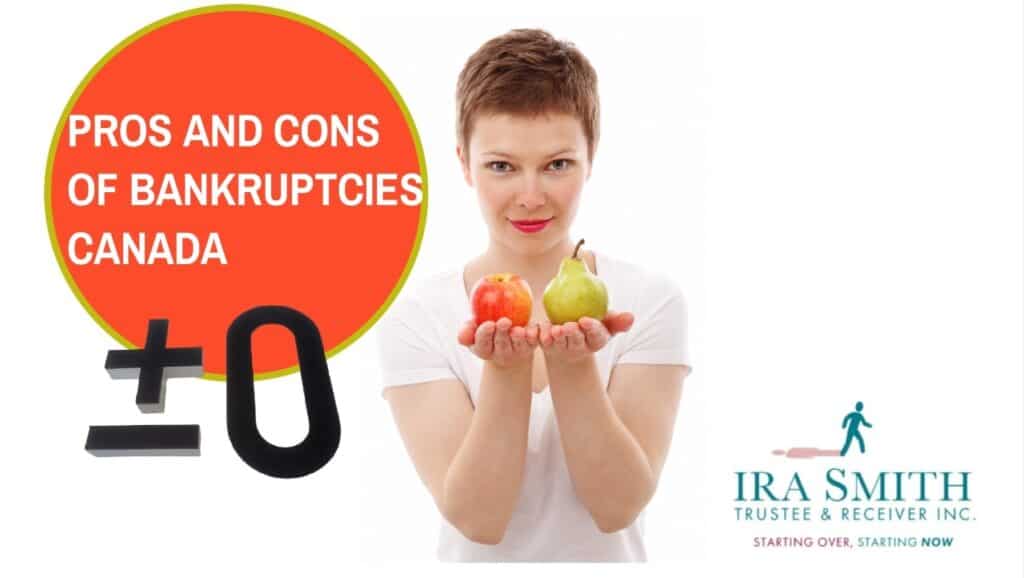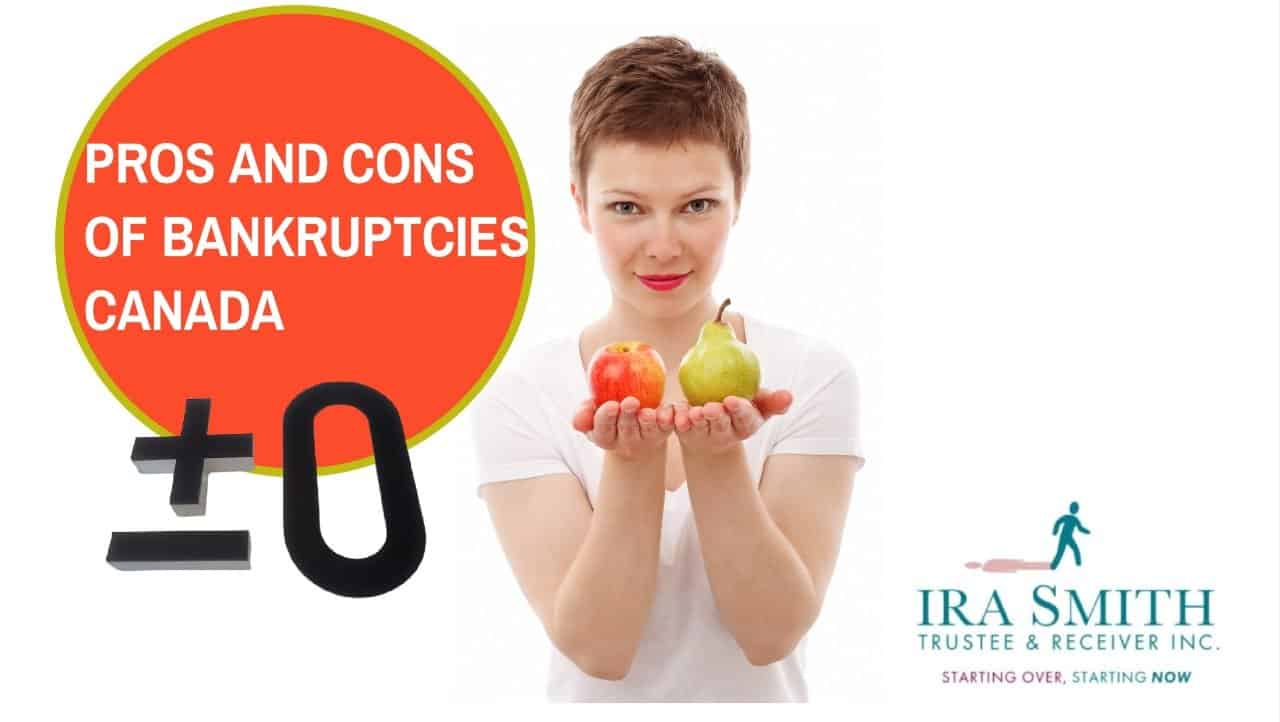Insolvency Meaning: Introduction
In a vibrant economic environment where change is the only constant, legal and accounting experts have to be fluent in insolvency laws to be able to supply their clients with some basic advice they require to navigate tough financial situations. To use reliable guidance, lawyers and accounting professionals require a basic understanding of the complexities of Canadian bankruptcy regulations.
In this first in a series of blog posts, Brandon’s Blog undertakes to encourage legal and accounting professionals not familiar with insolvency techniques to help clients navigate the Canadian bankruptcy system. Understanding essential principles and vocabulary about bankruptcy is essential before working together with experts in this area. We will discover the complexities of the insolvency meaning, and take a look at the varied forms of insolvency identified in Canada.
Insolvency Meaning: Key Concepts and Terminology
Insolvency Meaning: Insolvency Is A Financial Challenge
Financial distress, or insolvency, describes a scenario where a person or company is incapable of satisfying their financial commitments. This can transpire when they have a lot more liabilities than assets or when their cash flow is inadequate to cover their financial obligations. Because of this, people might have a hard time paying their bills, personal loans, or mortgages, while businesses might discover it testing to satisfy payroll, vendor payments, or difficult financial debt obligations.
Insolvency vs. Bankruptcy
While insolvency and bankruptcy are frequently used interchangeably, they have distinct definitions. Insolvency is a financial state where an entity or individual cannot meet their financial obligations as they end up being due. On the other hand, bankruptcy is a legal declaration under federal government bankruptcy law resulting in a bankruptcy filing. It includes the restructuring of financial obligations or the liquidation of assets under the supervision of the court.
Insolvency is an economic condition, whereas bankruptcy is a legal process to deal with that problem. Comprehending this difference is necessary for people and companies and their legal and financial advisors when dealing with financial obstacles.
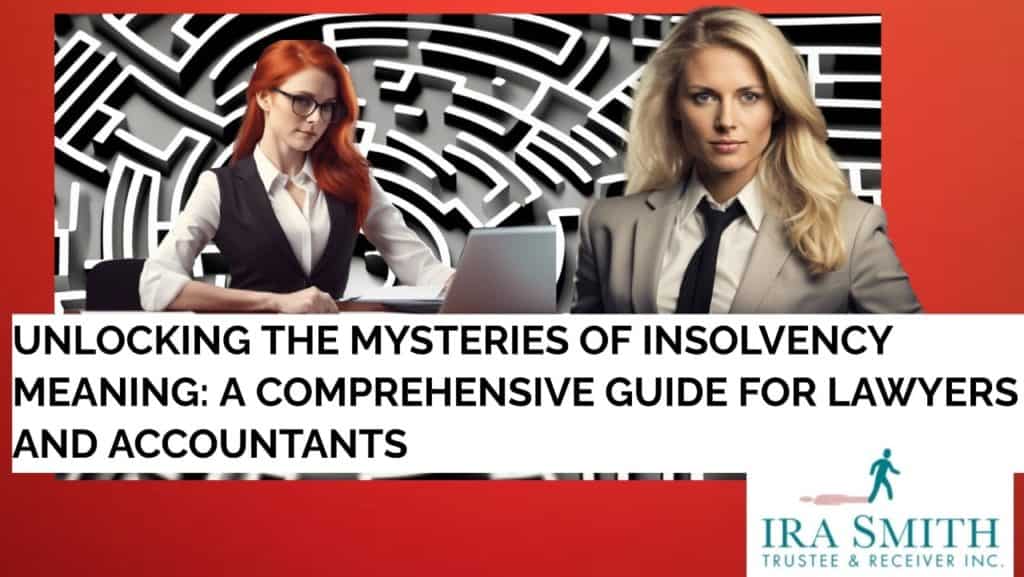
Insolvency Meaning: Forms of Insolvency in Canada
In Canada, there are several forms of insolvency that individuals and businesses may encounter. The most common way of describing the different forms of Canadian insolvency procedure is:
- Personal Insolvency: When an individual is unable to repay their debts, but their debts and financial situation are either large, complex or both. These individuals may look to either a bankruptcy restructuring of their debts or in certain cases, a bankruptcy to liquidate assets and discharge their debts to allow them to get a fresh start. This type of insolvency also includes a business in the form of a sole proprietorship or partnership.
- Corporate Insolvency: Limited companies facing financial distress may opt for restructuring where the business is viable. This is done through either the Companies’ Creditors Arrangement Act (CCAA) or the Bankruptcy and Insolvency Act (Canada) (BIA). In some cases, where the business is no longer viable, liquidation through bankruptcy is the only option.
- Consumer Insolvency: This refers to the financial challenges faced by consumers, often leading to paying a portion of their debts to discharge all their debts through a consumer proposal under the BIA and avoiding bankruptcy. In other situations where a consumer proposal is not feasible, then bankruptcy would be the necessary filing.
Each type of insolvency possesses its distinctive qualities and procedures, underscoring the paramount significance of seeking guidance from seasoned professionals amidst financial problems. In every circumstance, the main goal remains to avoid bankruptcy.
Within the Canadian realm, solely licensed insolvency trustees bear the capacity to oversee affairs falling under the jurisdiction of either the CCAA or BIA. These professionals are bestowed with licenses and subject to the vigilant supervision of the Office of the Superintendent of Bankruptcy Canada.
Insolvency meaning: Canadian Insolvency Laws and Framework
When it comes to insolvency in Canada, two key legislations govern the process: the BIA and the CCAA. These federal bankruptcy laws provide a framework for dealing with financial difficulties faced by individuals and businesses.
The BIA provides provisions for debtors, be they individuals or corporate entities, encountering financial difficulties to seek respite through either a debt restructuring mechanism or the declaration of bankruptcy. These prescribed legal avenues empower debtors to effectuate the eradication or modification of their financial liabilities, subject to the oversight of a duly authorized licensed insolvency trustee. The BIA delineates the specific entitlements and responsibilities bestowed upon debtors, creditors, and insolvency trustees, thereby guiding the intricate course of bankruptcy restructuring or liquidation proceedings.
On the other hand, the CCAA is specifically designed for larger corporate restructurings. It provides a mechanism for insolvent corporations with debts exceeding $5 million to restructure their affairs and debts while continuing to operate under court protection. The CCAA aims to facilitate the rehabilitation of financially distressed companies and maximize returns to creditors.
Debtors under the BIA have the right to seek debt relief through bankruptcy or a restructuring proposal, which is a formal agreement to settle debts with creditors. Creditors have the right to receive payments as per the priority set out in the BIA and participate in the insolvency proceedings. Licensed Insolvency Trustees play a crucial role in administering the insolvency process, ensuring compliance with the legislation, and facilitating communication between debtors and creditors.
Under the CCAA, companies facing financial difficulties can apply for court protection from their creditors to restructure their operations and debts. The court appoints a monitor to oversee the restructuring process and ensure that the interests of all stakeholders are considered. The CCAA process allows companies to negotiate with creditors, develop a restructuring plan, and seek court approval for its implementation. There is a similar process for company restructuring under the BIA. Each process has its advantages and disadvantages.
In conclusion, the Canadian insolvency laws set out in the BIA and CCAA provide a structured approach to dealing with financial distress for individuals and corporations alike. By understanding their rights and obligations under these laws, debtors, creditors, and LITs can navigate the insolvency process effectively and work towards achieving a fair resolution for all parties involved.

Insolvency Meaning: Key Indicators Of Insolvency
Key indicators and examples of insolvency typically include:
- Trouble in Paying Financial Obligations: Among the key signs of insolvency is when a person or business constantly battles to make debt payments on time, such as paying bills, personal loans, mortgages, or suppliers.
- Cash Flow Insolvency: Insolvency commonly materializes through cash flow difficulties, where there is insufficient cash handy to cover expenses as they come to be due. This might cause constant overdraft accounts, NSF cheques, or late payments to financial institutions.
- Balance Sheet Insolvency Through Increasing Debt Levels: A significant increase in debt levels compared to income or assets is a warning sign of approaching insolvency. Rising debt amounts integrated with a restricted capacity to pay indicate financial distress.
- Declining Earnings: For organizations, decreasing profits or continual losses over time indicates underlying financial problems. Gross margin tightening or vanishing leads to an inability to generate adequate revenue to cover expenditures.
- Balance Sheet Insolvency Through Asset Erosion: Balance sheet insolvency can also happen due to a decline in the value of assets while liabilities stay relatively flat or rise. When assets are not able to cover liabilities because of substantial impairment, that is a classical insolvency meaning.
- Lawsuits by Creditors (and maybe even customers): Legal action taken by lenders and/or suppliers, such as lawsuits, collection initiatives, or repossession process, can be a clear indication that financial troubles have reached a critical point and the insolvency of the debtor.
- Unable to Obtain Credit: Difficulty in getting brand-new credit or protecting favourable lending terms happens when lenders or suppliers see the specific person or business as a higher credit risk, most likely because of underlying financial instability.
- Use of Short-Term Funding for Long-Term Obligations: Relying upon short-term financings, such as credit cards or payday advances, to cover longer-term commitments, such as making payroll or normal monthly expenses, shows financial stress and prospective insolvency.
- Non-Financial Signs of Distress: Beyond money metrics, non-financial indicators of distress, such as management turnover, decreasing client base, or distributor concerns, can additionally suggest underlying financial issues leading to insolvency.
- Credit Rating Downgrades: A downgrade in credit ratings by credit score firms indicates perceived economic weak points and boosts borrowing costs, intensifying financial problems for individuals or businesses.
Spotting these key signs of insolvency is something that anyone should be able to do, whether you practice in the insolvency world full-time or not at all. At the onset lawyers and accountants can assist in proactive actions for people and enterprises to deal with economic obstacles and seek professional help. Lawyers and accountants can do so before getting into an irreversible state of insolvency requiring the retainer of a licensed insolvency trustee.
Insolvency Meaning: Types of Insolvency Proceedings
People and companies dealing with their economic problems have options regarding insolvency proceedings. Each option tackles one or more particular issues and the solution utilized must be able to satisfy the individual’s or business’s special scenarios. Here are the primary Canadian insolvency procedures:
Individual Bankruptcy
Personal bankruptcy is a legal process developed to assist individuals who are incapable of paying off their debts. Through this bankruptcy proceeding, people can get rid of or reorganize their financial obligations under the guidance of a Trustee. The procedure entails selling off assets to pay off creditors as established by the BIA and getting relief from frustrating financial responsibilities to get a fresh start.
Corporate Restructuring
Company restructuring is a financial procedure that allows companies encountering economic distress to restructure their business operations, financial debts, and frameworks. This kind of bankruptcy protection case intends to help companies end up being economically feasible once again by renegotiating financial obligations, selling redundant or no longer needed assets, or carrying out functional adjustments to the business. Business restructuring can help companies prevent bankruptcy and get back to running successfully and profitably. It can occur under either the CCAA or BIA.
Consumer or Division I Proposals
Consumer proposals and Division I proposals are formal arrangements discussed between a debtor and their creditors to work out unsecured debts without filing personal bankruptcy. In either type of proposal, the debtor promises to pay off a part of the debt over a prolonged period, not greater than 60 months, using monthly payments or with a lump-sum payment. In return for doing so, when they are finished paying the portion of the total debt stated in the proposal, the full amount of debt is extinguished. This insolvency remedy enables people to stay clear of the preconception and lasting repercussions of bankruptcy while still resolving their financial problems.
Those who owe $250,000 or less, apart from any financial obligations secured by a registration against the debtor’s home, can use a consumer proposal. For those other people with higher financial obligations, or companies, the Division I Proposal process is readily available. Both kinds of proposals are administered under the BIA.
Key Points to Remember:
- Personal bankruptcy means that assets will be liquidated to repay debts.
- Corporate restructuring focuses on rearranging company operations to end up being financially and practically viable.
- Consumer proposals are a debt solution that allows people to negotiate payment plans with their creditors.
Understanding the different sorts of bankruptcy proceedings is crucial for people and businesses encountering financial difficulties and their legal and accounting professionals. By discovering these alternatives and seeking suitable specialist suggestions, debtors can navigate their financial difficulties and work in the direction of a fresh financial and stress-free start.

Insolvency Meaning: Roles of Lawyers and Accountants
When it comes to navigating the complex world of insolvency matters, the roles of lawyers and accountants are crucial in providing expert guidance and support to individuals and businesses. Let’s delve into the specific responsibilities and contributions of these professionals in handling financial challenges:
Legal Advice and Representation in Insolvency Matters
Lawyers play a vital role in supplying legal advice and representation to clients with insolvency concerns. They are educated to analyze and use the laws related to personal bankruptcy, financial debt restructuring, and various other insolvency procedures. By having a legal expert on their side, people and companies can make informed decisions regarding their financial situation and lawful rights. For those lawyers who do not practice insolvency, knowing the basics at the very least gets the conversation started.
In corporate restructurings, the role of the company lawyer is vital. The company’s legal firm will have extensive expertise in specific special assets, such as patents, trademarks and specialized licenses.
Proficiency in Preparing Financial Statements and Developing Restructuring Strategies
Accountants bring important financial knowledge to the table by helping clients in preparing accurate financial statements and creating reliable restructuring strategies which need to consist of comprehensive budget plans and cash-flow estimates. They possess the required skills to analyze financial information, determine essential areas for improvement, and develop detailed strategies to deal with economic difficulties. By leveraging their knowledge, clients can get clarity on their financial standing and chart a path toward economic stability. Regular tax compliance and filings, along with the income tax result of numerous restructuring plans, is likewise an essential part of the restructuring that can be carried out by the firm’s exterior accountant.
By doing this, accountants can be an indispensable part of the restructuring process assisting the licensed insolvency trustee.
Insolvency Meaning: Helping Clients Facing Financial Difficulties
Both lawyers and accountants play a collective role in helping clients who encounter monetary challenges. Whether it’s bargaining with lenders, representing clients in court proceedings, or offering strategic financial suggestions, these professionals collaborate to sustain their clients facing insolvency. Their combined efforts can assist clients work through the intricacies of insolvency and emerge more powerful.
The roles of lawyers and accountants are crucial when it pertains to dealing with insolvency matters and leading clients through economic chaos. By offering legal advice, financial knowledge, and undeviating support, these professionals play a critical role in aiding people and businesses to overcome economic obstacles and lead the way to a brighter economic future.
Insolvency Meaning: Typical Insolvency Issues Dealt With by Clients
Facing insolvency can be a daunting and frustrating experience for individuals and companies alike. It generally includes a variety of financial difficulties and stress that can significantly affect one’s economic stability and future. Below are some common insolvency concerns dealt with by clients and exactly how to address them:
Increasing Debts, Creditor Pressure, and Cash-Flow Obstacles
One of the key indications of insolvency is the accumulation of increasing debts that become progressively difficult to pay off. This circumstance is usually intensified by creditor pressure, where creditors might start demanding loan repayment or starting lawsuits to recover what they are owed. Additionally, cash-flow obstacles can better exacerbate the economic pressure, making it tough for people or companies to cover their expenses and financial debt responsibilities.
To address these issues, it is necessary to take a positive strategy by analyzing the total financial obligation load, working out with creditors better and realistic credit terms and payment strategies, and applying techniques to improve cash flow. Looking for licensed insolvency trustee recommendations or credit counselling can additionally be advantageous in working through these difficulties and establishing a sustainable financial debt monitoring strategy.
Identifying Warning Signs of Insolvency Early On
Early discovery of insolvency warning signs is crucial in taking prompt rehabilitative actions to prevent more economic deterioration. Some typical indications consist of persistent cash flow issues, missed payments to lenders and suppliers, declining sales or income, enhancing dependence on credit products and short-term loans, and lawsuits such as court judgments or liens against assets.
By acknowledging these warning signs beforehand, people and businesses can look for ideal assistance from their accountants, lawyers, or insolvency professionals to discover practical solutions and prevent much more severe effects such as bankruptcy.
Exploring Alternatives for Debt Relief
When dealing with insolvency, discovering debt alleviation options becomes crucial to attaining financial security and staying clear of overwhelming financial obligation burdens. Some usual financial debt alleviation solutions include debt consolidation using a debt consolidation loan, financial debt settlement, debt restructuring, debt forgiveness with formal financial debt restructuring and even filing bankruptcy (as a last resort).
Each choice has its advantages and negative aspects, depending upon the individual’s or company’s financial situation and goals. It is crucial to assess the readily available alternatives very carefully and look for experienced advice to identify which one will be the most proper insolvency fighting technique that lines up with your client’s demands and conditions.

Insolvency Meaning: Ethical Issues To Consider In Insolvency Administration
Maintaining Client Privacy and Preventing Conflicts of Interest
Among the core moral factors to consider in insolvency practice is the obligation to preserve client confidentiality and avoid conflicts of interest. Insolvency experts are handed over a large amount of delicate information regarding their client’s financial affairs, which need to continue to be private. The only exemption is if the court directs the Trustee to disclose the info.
Although there is not the very same expectation of privacy as there remains in the client-lawyer relationship, by vigilantly safeguarding client confidentiality, lawyers play a crucial and distinct role for an insolvent debtor who requires a guarantee of confidentiality when seeking insolvency recommendations.
Performing in the Very Best Interests of Clients
Performing in the very best interests of clients is a basic concept that underpins an ethical insolvency practice. Insolvency practitioners have a fiduciary responsibility to prioritize the well-being of their clients and make decisions that advance the client’s interests rather than serve their own interests.
By approaching each situation with a dedication to advocating for the client’s wellness, insolvency specialists can show their devotion to honest conduct. This involves making choices that align with the client’s needs and functioning towards accomplishing the best end result in challenging economic situations.
Transparency and Integrity Throughout the Insolvency Case
Openness and integrity are crucial components that need to penetrate every stage of the insolvency process. Insolvency professionals must perform with honesty, justness, and transparency to preserve the trust of all stakeholders involved. By promoting transparent interaction and maintaining high moral requirements, insolvency professionals can make certain that the insolvency case is conducted with integrity. This not only improves the reliability of the professional but also instills confidence in the fairness and integrity of the entire process.
Insolvency Meaning Frequently Asked Questions
This Brandon’s Blog has tried to address the most frequently asked questions about insolvency meaning. The FAQ checklist is as follows:
- What is insolvency?
- What are the essential signs of insolvency?
- Is there a difference between insolvency and bankruptcy?
- What are the differences between individual and corporate bankruptcy?
- What laws govern bankruptcy in Canada?
- What are the duties of licensed insolvency trustees in the Canadian insolvency process?
- What are the possible ramifications of insolvency for both creditors and debtors?
- What options are available for solving financial debt problems in cases of insolvency?
- What ethical factors should be thought about in a Canadian insolvency process?
- Exactly how can professionals help clients facing insolvency concerns?
You can utilize the above frequently asked question as a type of self-test. You will find all the answers above in this Brandon’s Blog.
Insolvency Meaning: Conclusion
Understanding Canadian insolvency laws is essential for effectively handling financial distress situations. By gaining a solid foundation in these laws, professionals can better serve their client’s needs and guide them through complex insolvency matters with confidence and competence. One of the key benefits of having a comprehensive understanding of insolvency laws is the ability to provide tailored solutions that align with the client’s specific circumstances. This enables professionals to offer personalized guidance and support, ultimately helping clients address their financial challenges strategically and effectively.
By assisting clients in navigating insolvency matters proficiently, lawyers and accountants can empower them to take proactive steps towards a brighter financial future. This includes providing insights on debt restructuring, bankruptcy options, and other relevant strategies that can improve financial sustainability and stability. Ultimately, the goal of leveraging a foundational understanding of Canadian insolvency laws is to facilitate positive outcomes for clients, equipping them with the knowledge and resources needed to overcome financial obstacles and achieve long-term success. This also allows them to remain your client!
I hope you enjoyed this insolvency meaning Brandon’s Blog. Individuals and business owners must take proactive measures to address financial difficulties, consumer debt and company debt and promptly seek assistance when necessary. It is crucial to recognize that financial stress is a prevalent concern and seeking help is a demonstration of fortitude, rather than vulnerability. Should you encounter challenges in managing your finances and find yourself burdened by stress, do not delay in pursuing aid.
Revenue and cash flow shortages are critical issues facing people, entrepreneurs and their companies and businesses with debt problems that are in financial distress. Are you now worried about just how you or your business are going to survive? Are you worried about what your fiduciary obligations are and not sure if the decisions you are about to make are the correct ones to avoid personal liability? Those concerns and more associated with your company debt are obviously on your mind.
The Ira Smith Team understands these overwhelming debt financial health concerns. More significantly, we know the requirements of the business owner or the individual who has way too much financial debt. You are trying to manage these difficult financial problems and you are understandably anxious.It is not your fault you can’t fix this problem on your own and it does not mean that you are a bad person. The pandemic has thrown everyone a curveball. We have not been trained to deal with this. You have only been taught the old ways. The old ways do not work anymore.
The Ira Smith Team uses innovative and cutting-edge methodologies, to adeptly navigate you through the intricacies of your financial challenges ensuring a resolution to your debt-related predicaments without resorting to the rigours of the bankruptcy process. We can get you debt relief now! We have helped many entrepreneurs and their insolvent companies who thought that consulting with a Trustee and receiver meant their company would go bankrupt. On the contrary. We helped turn their companies around through financial restructuring. We look at your whole circumstance and design a strategy that is as distinct as you are. We take the load off of your shoulders as part of the debt settlement strategy we will draft just for you.
The Ira Smith Trustee & Receiver Inc. team understands that people facing money problems require a lifeline. That is why we can establish a restructuring procedure for you and end the discomfort you feel. Call us now for a no-cost consultation. We will listen to the unique issues facing you and provide you with practical and actionable ideas you can implement right away to end the pain points in your life, to begin your debt-free life, Starting Over, Starting Now.
